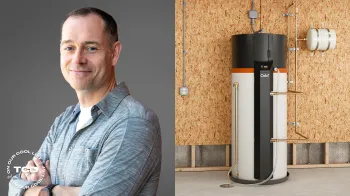After a wildfire burns through an area, the smoke eventually clears. But that doesn't mean it's no longer hazardous. With the recent devastating wildfires that ravaged parts of Southern California, experts warn that ash and microscopic pollutants can linger in the air for days or even weeks, posing health risks long after the flames are out.
An article by LAist references social media posts trying to pinpoint areas at risk based on their proximity to the fires. "But it's not that simple," LAist reported. "Smoke and ash can affect air quality hundreds of miles away, as we saw during the Canada wildfires in 2023."
What's happening?
Long after the fire is out, ash can remain suspended in the air, especially when winds pick up and blow it into new areas. Even people far from the fire zone could breathe in polluted air.
Experts estimate wildfire smoke can be up to 10 times more harmful to the lungs than regular pollution, per the Stanford Woods Institute for the Environment. And to make matters worse, these particles don't just contain burned trees — they also house toxic materials like plastic, lead, and asbestos from burned buildings.
Why is wildfire smoke dangerous?
Wildfire smoke can cause health problems for people, from asthma attacks to heart and lung disease. Vulnerable groups, including children, the elderly, and people with preexisting health conditions, are particularly at risk.
Aside from property damage and the threat to human life, wildfires burn vegetation, destroy animal habitats, and harm the environment.
Watch now: Survivors of extreme weather events discuss their fears for their children
And even though pollution from dirty fuels is the primary culprit behind a warming climate, wildfires also release large amounts of harmful planet-warming gases. While extreme weather events like wildfires are nothing new, rising global temperatures are one reason they're increasing in severity and frequency.
"We can say with strong confidence that climate change has made these events much more likely and much more severe," said Marshall Burke, an associate professor at the Stanford Doerr School of Sustainability.
What's being done about this?
Weather apps and trackers, like the AirNow fire and smoke map, can help people understand their risk of exposure to ash-polluted air. People in at-risk areas can stay indoors or wear filtering N95 masks if they go outside. Some states also have clean air centers for anyone who needs clean, filtered air.
|
Do you worry about air pollution in and around your home? Click your choice to see results and speak your mind. |
For its part, California has a Wildfire and Forest Resilience Action Plan to help reduce the risk of wildfires and restore the health of the state's forests. Some homeowners are also using sustainable, fire-resistant materials to protect their properties. For example, this home incorporates features designed to reduce fire risk.
TCD Picks » Upway Spotlight

The best way to fight wildfires is to prevent them in the first place. Knowing how wildfires start and spread can help homeowners and communities take steps to mitigate risk.
Join our free newsletter for good news and useful tips, and don't miss this cool list of easy ways to help yourself while helping the planet.


















